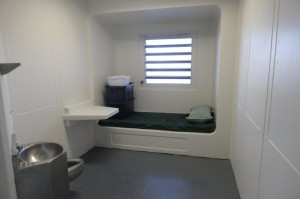By Jean Casella. Excerpted from Solitary Watch.
The settlement announced Wednesday by the New York Civil Liberties Union in the Peoples v Fischer case brings broad, deep, and meaningful change to the way New York utilizes solitary confinement in its state prisons. It is a significant and hard-won victory for the plaintiffs, their attorneys, and the hundreds of advocates who have long been battling the widespread use of solitary in the state.
Media hailed the changes as an “overhaul” of solitary confinement in New York. Governor Andrew Cuomo’s chief counsel, Alphonso David, called the agreement “radical and groundbreaking,” and told the New York Times that the governor “saw the lawsuit as an opportunity to make New York prisons a model for the country.”
Everything in the settlement of the four-year lawsuit indeed represents major progress, and the limits and alternatives it prescribes will bring relief to perhaps thousands of individuals suffering in solitary in New York. If there is a downside, it is that the largely celebratory tone of the announcements and press coverage may lead all of the people in long-term solitary to mistakenly expect that their ordeals will soon be over, and the public to believe that the struggle to end prolonged prison isolation in New York has now been won.
In fact, even amidst the hard-won celebrations, there is acknowledgement that the changes the settlement brings are incremental changes. While the agreement begins to address the underlying paradigm of punishment and control through isolation that has been liberally practiced in New York for decades, it does not destroy or replace it. And even when all its provisions are implemented, thousands of people are likely to remain in solitary, some for years or decades.
Read the full article here.

Follow the #HALTsolitary Campaign